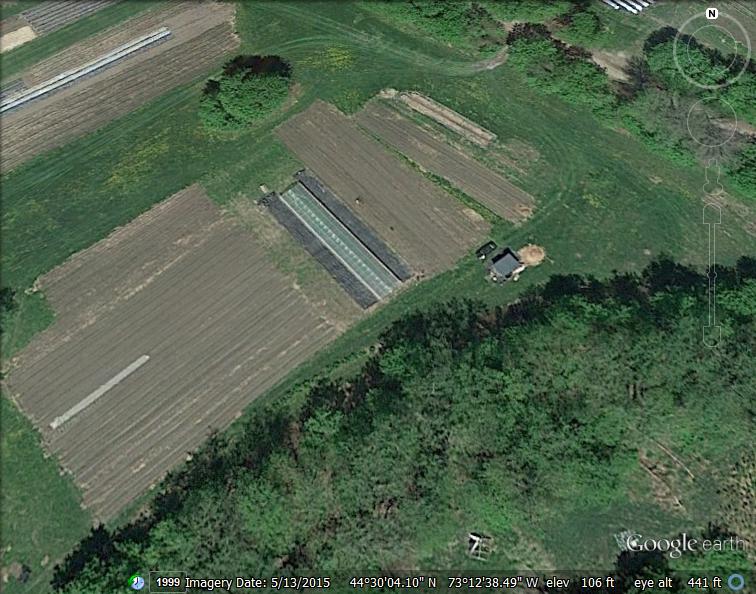My name is Matt Lasser and I am the Farm Manager for Sugarsnap Catering for the 2017 growing season, which has now arrived!
Heading into a fresh season on a farm that is new to me presents a variety of challenges. The most notable of these challenges is to figure out how the farm fits into the larger operation of providing quality farm-to-table catering. At Sugarsnap the farm provides a range of fruits and vegetables. Some crops will be used en masse by the kitchen, such as Buttercup Squash. Others, like beets, are used throughout the season. The farm is also capable of growing produce that would be otherwise hard to locate. This is why the farm grows a wide range of flowers and herbs, like lemon verbena, lovage, nasturtium, and anise hyssop.
Here is a aerial photo of 2 of our three acres in the Intervale:

Once I had all my information collected about what was needed from the farm, I was able to put together a crop plan. A farmer’s crop plan is the most important document a farmer will produce each year. The plan delineates what will be grown and when for the coming season. Careful crop planning takes into consideration just about every detail on the farm. As an example of what goes into crop planning, I’ll expand upon basil, one of our top crops on the farm.
In order to ensure a steady supply of basil through the year, as well as a few larger harvests for processing, basil must be planted on a regular schedule. At the same time, a farmer must consider the challenges of their field. Do I have space in the field for this crop? If yes, where is the basil going to be planted? How long will a single planting be harvested? Will the plants be direct seeded in the field, or started in the greenhouse before getting transplanted into the field? Has basil encountered disease or pest problems in the field before?
For the 2017 season I will be starting new basil every three to four weeks in the greenhouse. This means that come planting time the basil will be larger than whatever weeds have popped up in the freshly prepared soil, thus making it easier to weed. This also means that faster-growing weeds won’t shade the basil out. We will harvest basil by cutting nearly the entire plant a few inches above the soil. This will allow the plant to regrow new foliage, which we will then harvest in the coming weeks. After two cuts, the basil won’t grow as happily as it once did, so we will remove that planting from the field and focus on the newer plantings, which should be rounding into form at that time. If all goes according to plan, we will have basil from July until it gets too cold outside for basil to live.
In order to write a successful crop plan a farmer must go through this exercise with every crop. This season the farm will be growing about 70 varieties of row crops, 10 kinds of fruit, 30 varieties of flowers, and about 50 different herbs.
